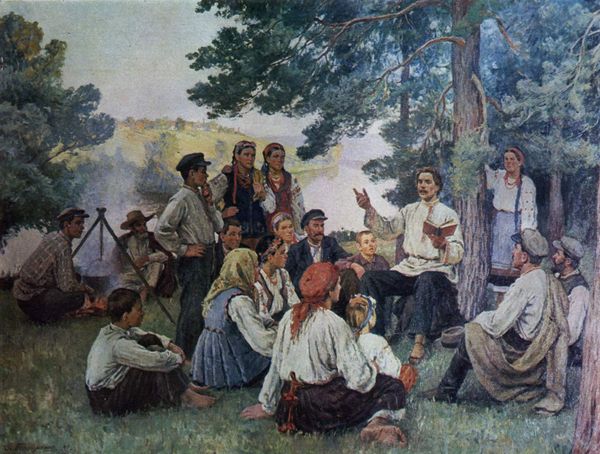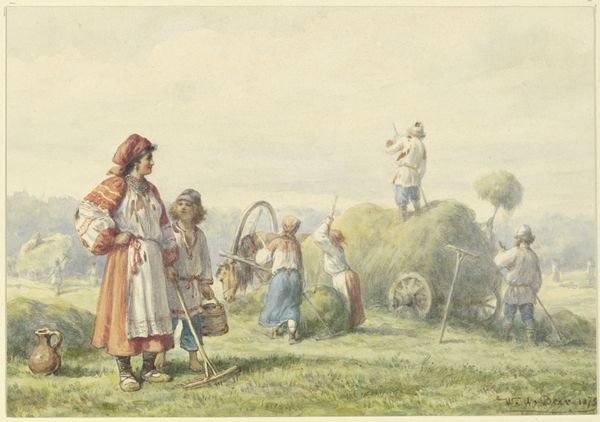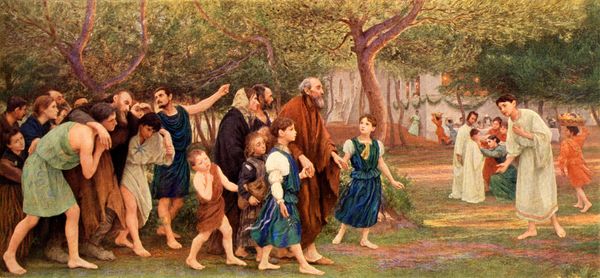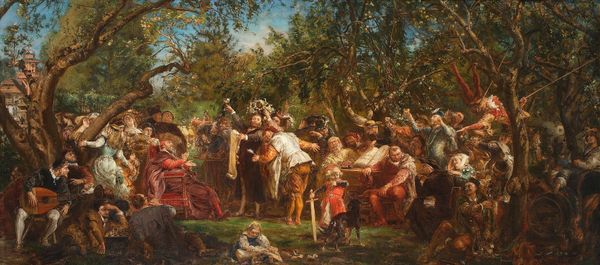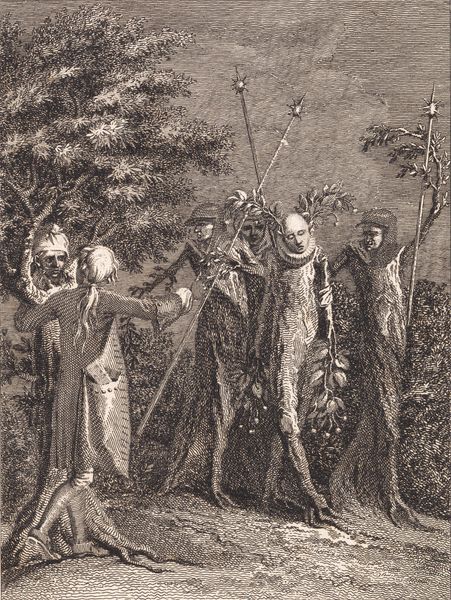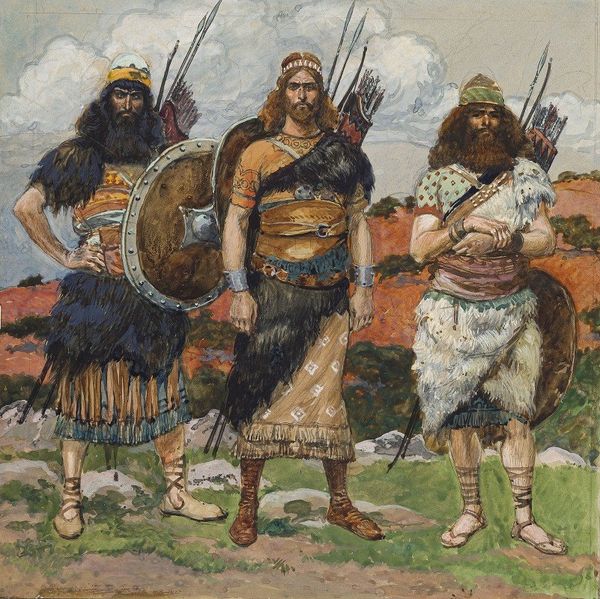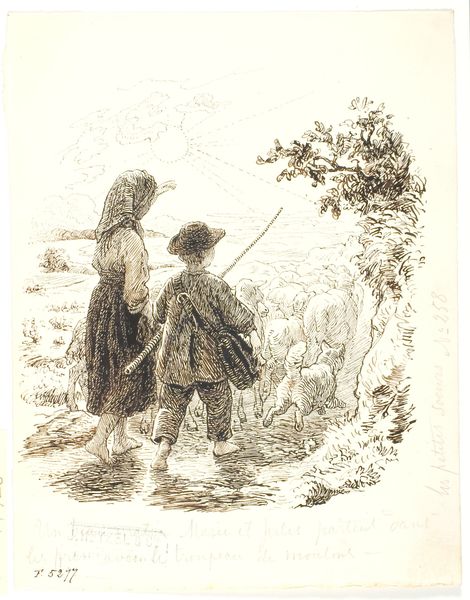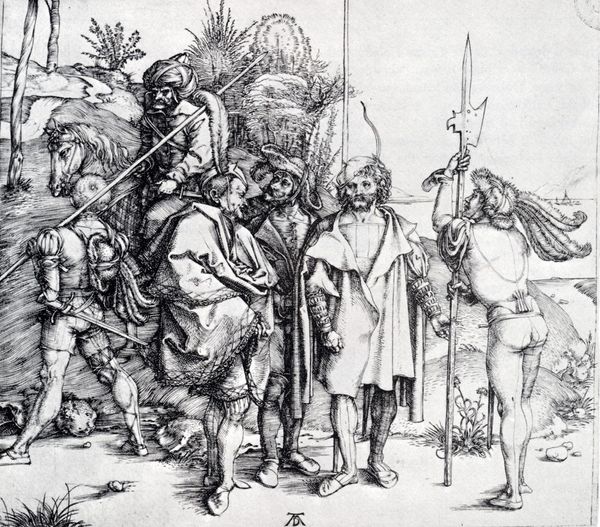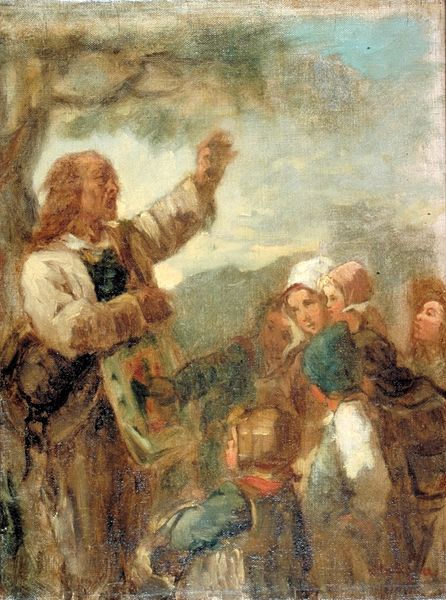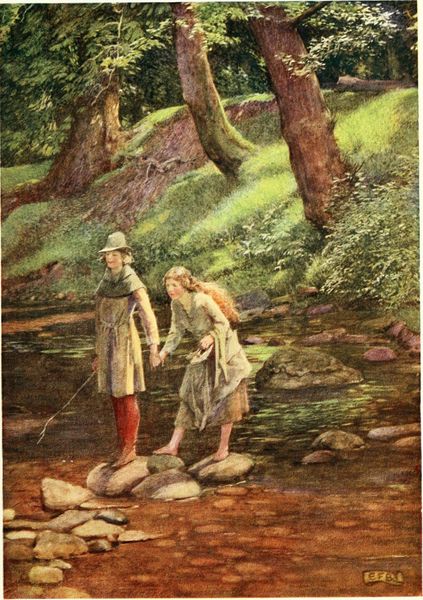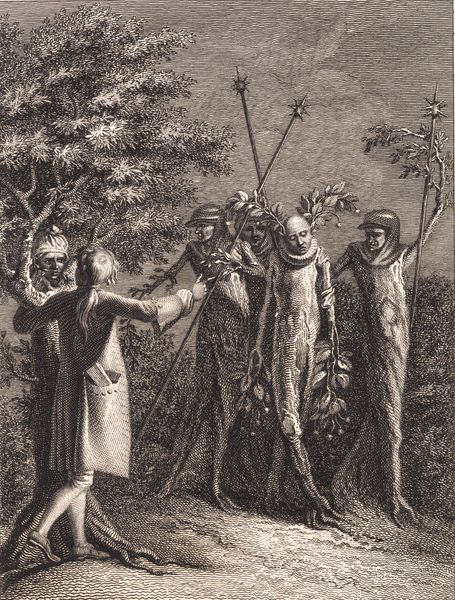
painting, oil-paint
#
painting
#
oil-paint
#
landscape
#
soviet-nonconformist-art
#
socialist-realism
#
figuration
#
oil painting
#
naive art
#
genre-painting
#
realism
Dimensions: 302 x 405.5 cm
Copyright: Pyotr Konchalovsky,Fair Use
Editor: We're looking at Pyotr Konchalovsky’s "From Mowing," an oil painting from 1948. It depicts a group of women carrying farm tools in a landscape. The scene feels very staged, almost like a propaganda piece celebrating rural labor. What's your take on it? Curator: That's a great initial reaction. Looking at it through a historical lens, this piece screams Socialist Realism, the dominant art style in the Soviet Union during that period. Think about the political climate. Stalin was in power, and art was used as a tool to promote communist ideology. Editor: So, the idealized portrayal of labor is intentional? Curator: Absolutely. The painting presents a romanticized, almost utopian, view of collective farm work. It shows strong, capable women working in harmony with nature, a common motif in Soviet art of the time. Notice the healthy rosy cheeks. Is that perhaps idealized, not matching the likely physical demands of their task? Editor: It definitely glosses over the realities of agricultural labor. The figures are positioned almost like a parade. Were artists explicitly directed to create works like this? Curator: There was certainly state control and censorship. Artists who wanted to exhibit and receive commissions had to adhere to the principles of Socialist Realism, which emphasized accessible, optimistic, and politically relevant themes. "From Mowing" hits all those notes, but consider the subtle ways Konchalovsky personal style shines through; it is far from a mere replica. Editor: So, the painting isn't just about aesthetics, but also about reinforcing a specific political message? Curator: Precisely. The painting serves as a visual embodiment of Soviet values: collectivism, the glorification of work, and the depiction of an idyllic rural life. But also the strength of Soviet Women! This piece gives us a window into how art was employed as a form of propaganda and social engineering during that era. Editor: That's fascinating! It makes me see the painting in a whole new light, beyond just its surface appearance. Thank you for the added perspective. Curator: And it is exciting to look at how it succeeded or failed at being art at the same time it was propaganda. Art rarely fits into one box and that is why it continues to fascinate.
Comments
No comments
Be the first to comment and join the conversation on the ultimate creative platform.
